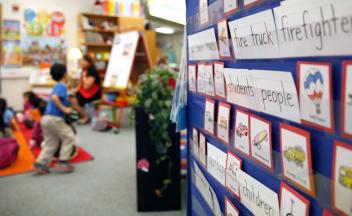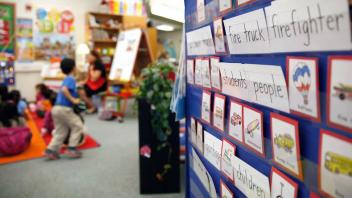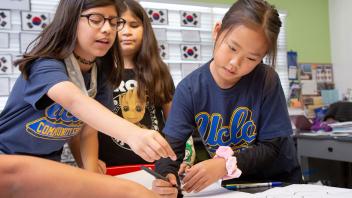A word is a small magic, a spell that can unlock the world.”
Jane Yolen
Vocabulary learning is all about the words we need to know to both understand what we hear and read, and to communicate clearly and with precision. Educators often consider four types of vocabulary:
- Listening vocabulary refers to the words we need to know to understand what we hear.
- Speaking vocabulary consists of the words we use when we speak.
- Reading vocabulary refers to the words we need to know to understand what we read.
- Writing vocabulary consists of the words we use in writing.
Vocabulary plays an important part in learning to read. Beginning readers must use the words they hear orally to make sense of the words they see in print. Kids who hear more words spoken at home learn more words and enter school with better vocabularies. This larger vocabulary pays off exponentially as a child progresses through school.
Consider, for example, what happens when a beginning reader comes to the word dig in a book. As she begins to figure out the sounds represented by the letters d, i, g, the reader recognizes that the sounds make up a very familiar word that she has heard and said many times. It is harder for a beginning reader to figure out words that are not already part of their speaking (oral) vocabulary.
Vocabulary is key to reading comprehension. Readers cannot understand what they are reading without knowing what most of the words mean. As children learn to read more advanced texts, they must learn the meaning of new words that are not part of their oral vocabulary.
The scientific research on vocabulary instruction reveals that most vocabulary is learned indirectly and that some vocabulary must be taught directly. Thus, research supports using a combination of both indirect and direct approaches.
Indirect vocabulary learning
Children learn the meanings of most words indirectly, through everyday experiences with oral and written language.
Children learn word meanings indirectly in three ways:
- They engage daily in oral language
- They listen to adults read to them
- They read extensively on their own
Direct vocabulary learning
Although a great deal of vocabulary is learned indirectly, some vocabulary should be taught directly.
Direct instruction helps students learn difficult words, such as words that represent complex concepts that are not part of the students’ everyday experiences. Direct instruction of vocabulary relevant to a given text leads to better reading comprehension.
Direct instruction includes:
- Providing students with instruction in specific words that are important to students’ content learning or understanding of a particular text
- Teaching students more general word-learning strategies that they can apply to a variety of words, such as analyzing parts of words (e.g., root words)
More on vocabulary
Reading 101 Learning Modules
Vocabulary: Introduction
Reading 101: A Guide for Parents
Reading 101 for Parents: Vocabulary
Why Some Kids Struggle
Target the Problem: Vocabulary
Classroom Strategy
Semantic Gradients
Classroom Strategy
List-Group-Label
Featured video on vocabulary
Browse our vocabulary resource library
Learn more about how to help children build their “word banks” through our articles, tips for parents, video, FAQs, and research briefs. Visit our Vocabulary section






